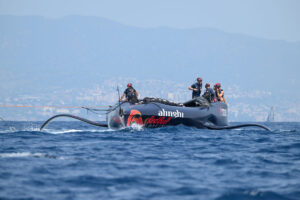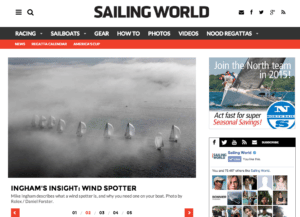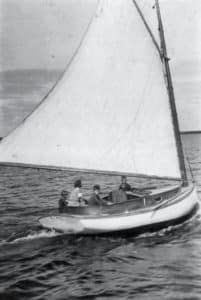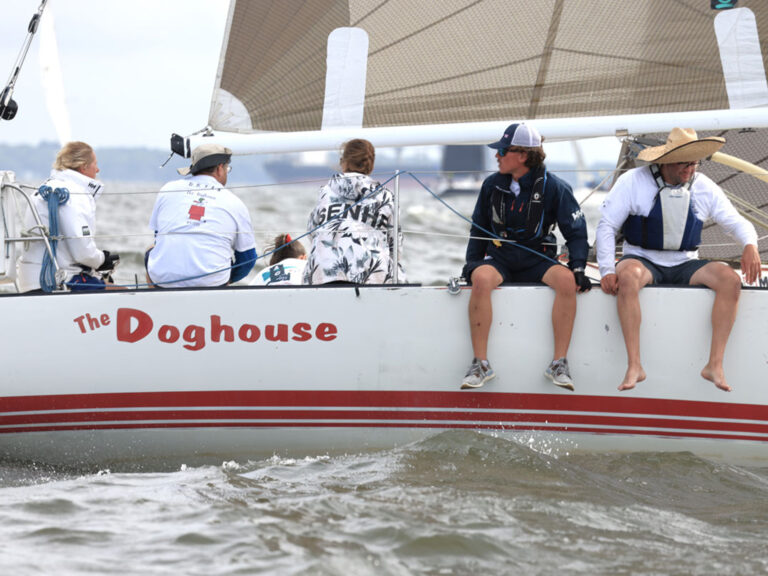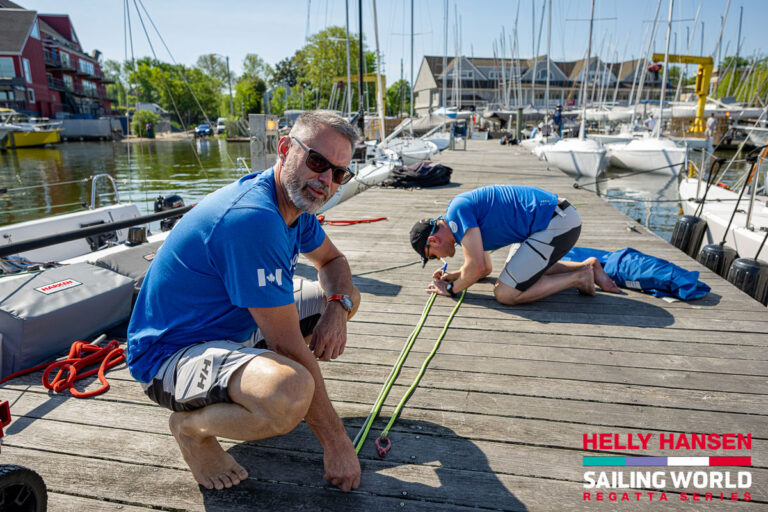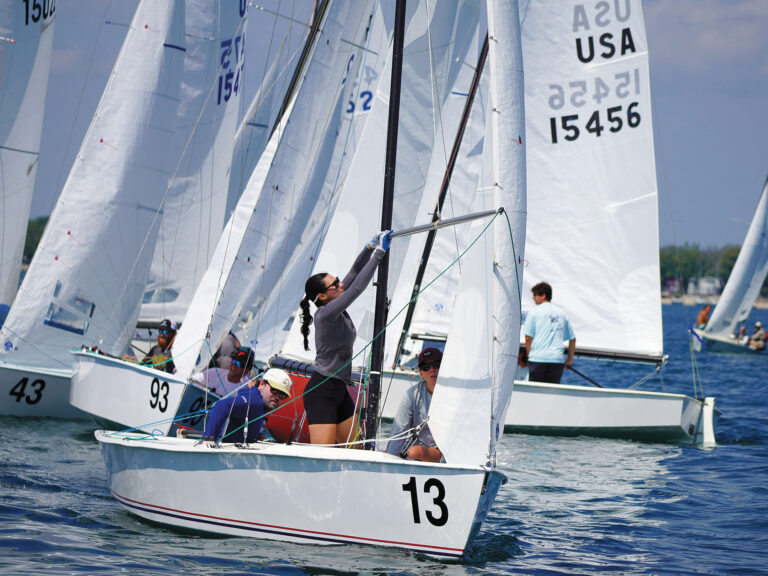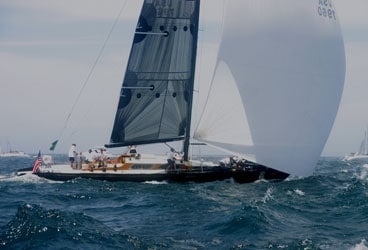
2008 hobart 368
Over the years, as either a competitor or a journalist, I’ve had the opportunity to witness the starts of many of the world’s great regattas and ocean races: America’s Cups, Whitbreads and Volvos, Newport-Bermuda, the Transpac, and on and on. But on a year-in, year-out, annual basis, there’s nothing that compares with the super-charged atmosphere every December 26th in Sydney, Australia, at the start of the Rolex Sydney-Hobart Race. The 2008 edition, which got underway on “Boxing Day” at the stroke of one o’clock, local time, was another beauty.
Part of it is the timing. Like the 4th of July in many parts of the U.S., Boxing Day serves as the unofficial start of summer and, as if they needed another excuse, most Aussies are more than ready to cut loose. To many, the yacht race is almost an afterthought, a convenient excuse to load up the coolers and descend on the waterfront. But it takes a sailor to truly appreciate the scene, which is absolutely surreal.
By 10:00 a.m., the docks at the host club, the Cruising Yacht Club of Australia (adjacent to the old 2000 sailing Olympic venue on Rushcutter’s Bay), were alive with electricity. At noon, most of the yachts were entering the several-mile-long exclusion zone in the center of the wondrous harbor, just out past the iconic Opera House, where their crews hoisted fluorescent storm canvas for race committee inspection before stashing them below and bending on working sails. Every headland was dotted with picnickers; the harbor beaches were teeming with umbrellas, bathers, and spectators (though from the racecourse, the ubiquitous, protective shark nets were invisible).
The general consensus among the natives is that it’s been a fairly crummy– or “shocking,” in the local vernacular– launch to the season, but the Chamber of Commerce couldn’t have ordered a more spectacular afternoon. As is always the case, or at least for the last few years, the line honors favorite was once again Bob Oatley’s maxi Wild Oats XI, which holds the current race record of 1D, 18H, 40M. Grant Wharington’s hard-luck Skandia, which never seems to negotiate the 635-mile run without some sort of drama, was the other favorite should Oats for some reason falter.
As they made quick work running the starting line, both boats were visible from a long way away, not only because of their size, but also for their distinctive sail plans: the main on Oats was emblazoned with a giant “7,” emblematic of the Seven Network, the television outlet that broadcasts the start live across Australia, while Skandia was dressed in all-blue livery. But the horizon was dotted with sails of all descriptions, and there were more than a few boats under 40-feet among the 100-strong fleet. In fact, a half-dozen Sydney 38s were mixing it up with the big boys, enough for their own one-design class, and while they lent the starting line an air of younger brothers trying to break into a sandlot ball game, they were every bit as ready for the Tasman Sea as their larger counterparts.
No less unusual, even though measuring in at a solid 65-feet, was the sole U.S. entry in the field, the pioneering West Coast entry Ragtime (ex-Infidel), a Stars & Stripes ensign flapping stiffly off her stern. Though Ragtime was a thoroughbred that won back-to-back Transpac Barn Doors in the mid-1970s, her scantlings were deemed too fragile when she’d tried to contest the Sydney-Hobart Race several years earlier, soon after she was launched in New Zealand. Having won last year’s revived Tahiti Race, new owner Chris Welsh carried on to the waters where she was conceived. He hadn’t planned on entering the Hobart Race, but one thing led to another, and Ragtime was on the starting line. Her low, sleek, singular lines, narrow beam, and shallow freeboard clearly set her apart from all the others, a throwback to a bygone era.
There are two starting lines for the race, set a few hundred yards apart, but just a single starting sequence and gun for the entire fleet, which sounded promptly at one. Crowd control, in the best of years, is more hopeful than certain, and separate starts for the nine respective divisions are simply out of the question.
With nearly a dozen helicopters overhead and an uncountable number of vessels on the water– everything from kayaks to beach cats to ferries– it was a clean start and the exclusion zone remained remarkably unencumbered by stray mariners and yahoos until Wild Oats rounded a turning mark at the famous Heads that mark the entrance to the deep, winding harbor, and set a sprawling, massive asymmetric kite. Then all hell broke loose. The sea was churned into a thick white froth; only Oats, and soon after, Skandia, seemed in anything like a semblance of control.
Out on one of the six media boats, I had a good view of the chaos as the boats turned the corner, set kites. and headed south. A week ago, the forecasters predicted possible record-setting northerlies, and while the start was blessed with a solid northeasterly, the models by race time were vague as to whether they’d last all the way to Hobart. Of course, by the time you read this, line honors may well be decided. Certainly, by late Boxing Day afternoon, Oats and Skandia were both hauling the mail, making nearly 20 knots and on record pace.
But as we motored back to the CYCA, we had a good look at the entire field, and it put the proceedings in better perspective. Ragtime executed a fine start and was one of the few boats at the head of the pack flying a chute off a conventional pole. She looked terrific.
The very last boat we saw, fittingly, was the smallest of them all, a 30-footer called Nest Property. I’d talked to her owner, Murray Wilkes, the day before the race. It was his first Hobart, a quest of a lifelong dream. He’d sailed the boat up from Hobart, through a gale, to make the start, and he’d said the highlight of his sailing life, to that point, had been to sail through the Heads into Sydney Harbor.
So I reckon I must’ve witnessed his new, best moment, as he sailed back out into the Tasman and set a course for home. Whatever happens in the days ahead, the Hobart Race had crowned its first winner.
Editor’s Note:
On December 28, Wild Oats XI beat Skandia by just over an hour to score its fourth consecutive line honours victory in the Rolex Sydney Hobart. On December 29, Bob Steel’s Quest won first place overall. For more about the race, go to www.rolexsydneyhobart.com

